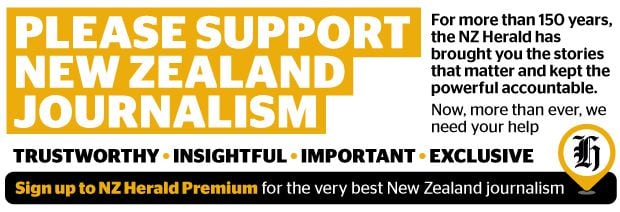The Government's spending watchdog decided to investigate the issue of PPE in April after concerns were raised.
It identified a number of significant holes in PPE management during the Covid-19 pandemic, including:
• That it didn't know how much PPE it had
• How much had expired
• Mixed messaging led to confusion
• Different DHBs having inconsistent information
• There hadn't been a national stocktake since 2016
• It didn't know how much PPE would be needed
• Its demand model didn't take into account many frontline healthcare workers
• That there were gaps in planning
Following the 2005 avian influenza outbreak, the Ministry of Health established a national reserve of supplies – such as PPE, antibiotics, and antiviral medication – to mitigate the risk that a pandemic would cause a spike in demand.
The Ministry also contracted a local private firm, Safety & Medical Manufacturers Limited, known as Quality Safety (QSi), to manufacture N95 masks and general surgical masks for the national reserve of PPE.
But the Covid-19 response found the Ministry's oversight of the national reserve of PPE had "fallen away over the years".
The Ministry had done no stocktake since 2016 and when it urgently tried to establish how much PPE was available in early February, it took DHBs five weeks to get the information and much of it was inconsistent.
"There was no central oversight of what the national reserve held. Requirements for stock rotation appear to have lapsed, and the Ministry did not monitor this."
And it was only then the Ministry learned much of its PPE had expired and was unusable - 14 DHBs had either expired masks or none at all.
"We are in no doubt that the Ministry has learned much from setting up systems to respond to the demand for PPE during Covid-19. We consider it timely for the Ministry to review the planning framework for the national reserve system."
The report found there were mixed messages as on March 31 Bloomfield said health staff needed "to feel safe as well as be safe" and the Ministry had instructed DHBs to provide PPE to the wider health and disability sector.
This led to a degree of confusion with some workers interpreting Bloomfield's comments as meaning that they would be supplied with the PPE they had requested.
"However, the Ministry's guidelines at that time set a narrower scope of what PPE should be worn than the subsequent guidance issued in late April and early May, and most DHBs followed those guidelines."
The Auditor-General tried to reconcile the stock held in stores, incoming stock and new stock on order but found that "difficult to do".
By April, the Ministry went from having oversight of national reserve stock held by domestic manufacturer QSi in its stores in three locations in the North Island to having a multitude of new domestic and international suppliers and three different distributors.
As well as DHBs having inconsistent information, each PPE supplier had different systems so the Ministry could not independently verify the information.
The Ministry also does not track the amount of stock released beyond DHBs to community providers.
"The Ministry considers its stock on hand information an estimate because of the difficulties in collating this information at a point in time, the differences in how organisations assess when stock has been released, and the potential for stock orders to be processed at any time of day in a hospital environment."
The Auditor-General recommended implementing a centralised system and periodic stocktakes to confirm the accuracy of the data and the condition of the stock.
It also recommended the Ministry reintroduce a requirement for DHBs to manage national reserve stock "in such a way as to reduce the risk of stock becoming obsolete".
And in March, the Ministry had no idea how much PPE would be needed.
It also relied on a depletion model which had "high-level assumptions" that didn't take into account aged residential care, community providers, ambulance services, or community midwifery services.
It wasn't until April the estimates were updated to include both the primary and community care health workforce.
The Auditor-General also took issue with the Ministry's indication it wanted to try have between three and six months' supply of PPE in light of the global demand.
"There is a significant difference between three and six months of stock."




